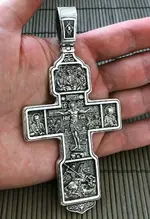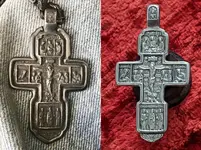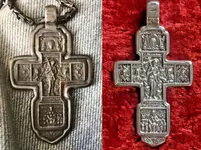A friend found this yesterday in Montreal, QC. It tests silver, both chain and cross weight a total 66 grams. Trying to ID and put an age to it. The chain appears to be Byzantine Style and the writing may be also. No .925 or sterling marks but a stamp is shown below. It was found close to an area that a one time was a Nunnery. Any theories would be helpful. 
Thanks very much for your help,
Dave






Thanks very much for your help,
Dave







 Was it found while detecting ?
Was it found while detecting ?



